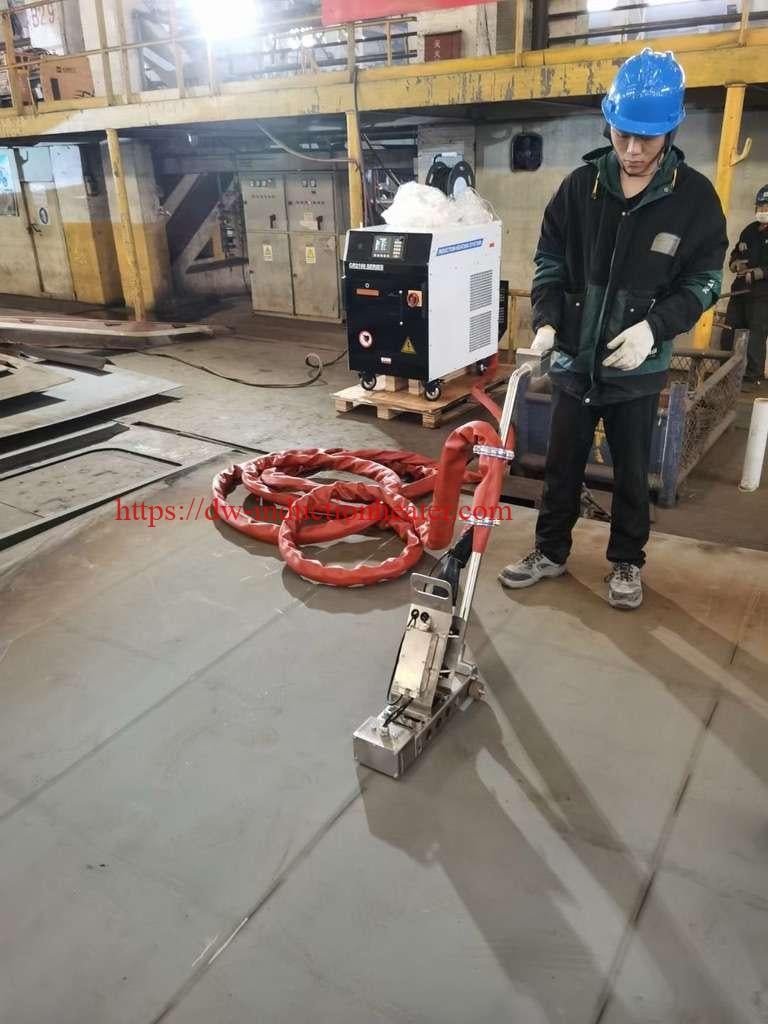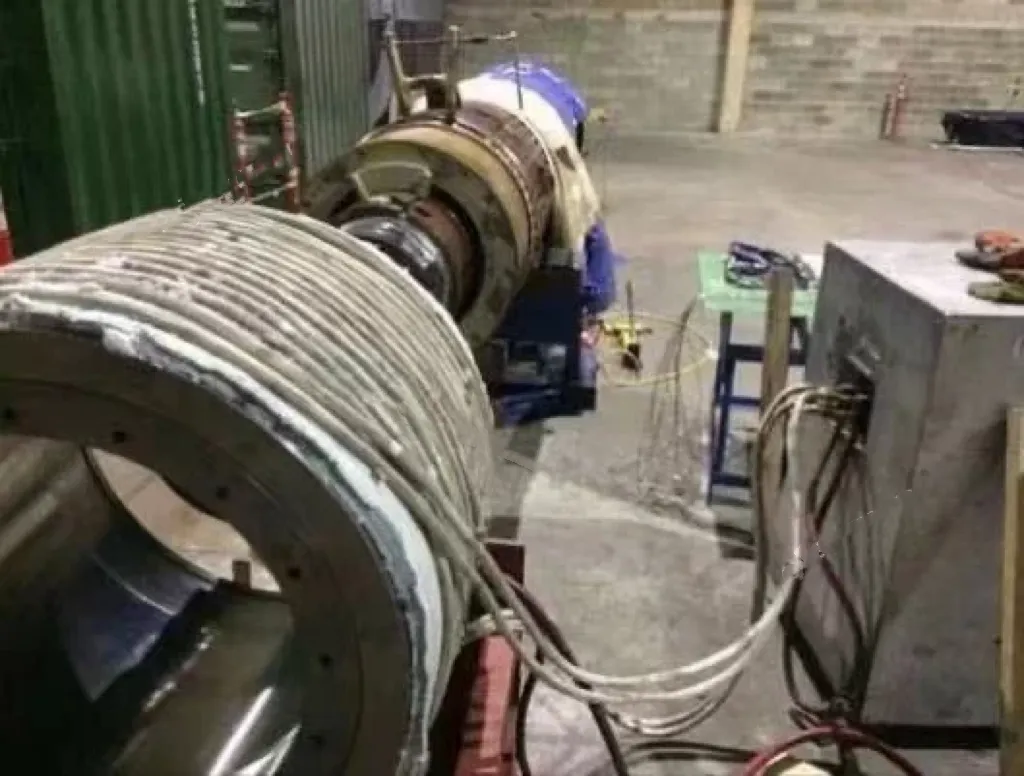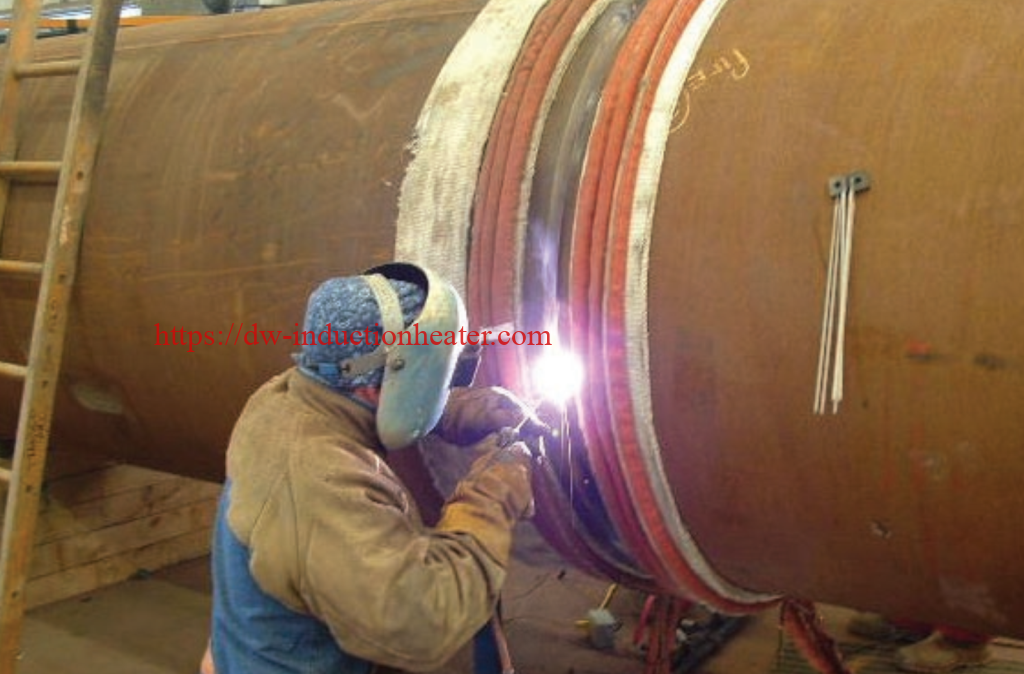Revolutionizing Shipbuilding and Heavy Machinery: Advanced Induction Heating Solutions
In today’s competitive maritime and heavy machinery sectors, efficiency and precision in manufacturing and maintenance operations are paramount. Induction heating technology has emerged as a game-changing solution, offering significant advantages over conventional heating methods. This comprehensive analysis explores how modern induction heating systems are transforming shipbuilding and heavy machinery maintenance through superior performance, energy efficiency, and operational benefits.
Understanding Induction Heating Technology
Induction heating utilizes electromagnetic fields to generate heat directly within ferrous and conductive materials without physical contact. This process creates localized, controlled heating that delivers numerous advantages for industrial applications:
- Rapid heating with minimal heat loss
- Precise temperature control
- Uniform heat distribution
- Environmentally friendly operation
- Enhanced workplace safety
- Reduced energy consumption
Key Applications in Shipbuilding and Heavy Machinery
1. Assembly and Disassembly
Induction heating has revolutionized assembly and disassembly processes for components with interference fits:
- Bearing Installation and Removal: Induction heaters quickly and uniformly expand bearings to temperatures of 80-120°C, creating clearance for effortless mounting onto shafts without damage. This eliminates harmful practices like hammer impacts or open flames.
- Coupling Management: For large shaft couplings in marine propulsion systems and industrial machinery, induction heating provides controlled expansion, ensuring proper alignment and preventing distortion during installation.
- Gear Assembly: Precision gears in gearboxes require exact fits to maintain tooth engagement patterns. Induction heating allows for controlled thermal expansion without risking metallurgical changes that could compromise gear performance.
- Process Efficiency: Modern induction systems feature temperature monitoring and automatic shut-off capabilities, preventing overheating while ensuring components reach optimal expansion temperatures.

2. Shrink Fitting
Shrink fitting using induction technology enables superior mechanical connections:
- Precision Control: Induction heating allows for expansion with tolerances as tight as 0.001mm, ensuring optimal interference fits when components cool.
- Applications: Commonly used for mounting impellers on pump shafts, securing locomotive wheels to axles, and installing large bearings in heavy machinery.
- Material Integrity: Unlike flame heating, induction heating preserves material properties by delivering heat precisely where needed without creating thermal gradients that could cause warping.
- Enhanced Joint Strength: The resulting interference fits provide superior torque transmission capabilities compared to keyed or splined connections, with enhanced resistance to fretting corrosion and fatigue.
3. Pre-heating for Welding
Induction pre-heating significantly improves welding outcomes:
- Hydrogen Diffusion: Pre-heating to 150-350°C facilitates hydrogen diffusion, reducing the risk of hydrogen-induced cracking in high-strength steels.
- Cooling Rate Control: By raising the base metal temperature, induction pre-heating slows cooling rates, producing more favorable microstructures in the heat-affected zone.
- Distortion Reduction: Even temperature distribution minimizes thermal stresses and resulting distortion, particularly crucial when welding thick sections or dissimilar materials.
- Productivity Enhancement: Portable induction systems enable pre-heating of pipe joints, pressure vessel seams, and structural components directly at installation sites, eliminating the need for gas torches and improving workplace safety.

4. Heat Treatment
Induction technology enables precise localized heat treatment:
- Selective Hardening: Surface hardening of specific wear zones (gear teeth, bearing races, cam lobes) without affecting surrounding areas, creating components with both tough cores and wear-resistant surfaces.
- Through-Hardening: Complete hardening of smaller components like fasteners, tools, and cutting implements with precise temperature control.
- Stress Relief: Controlled heating to 550-650°C for stress relief after machining or welding operations, preventing dimensional changes or cracking during service.
- Tempering: Precise temperature control during tempering processes ensures optimal balance between hardness and toughness in critical components like turbine blades and industrial tooling.

5. Maintenance Operations
Induction heating has transformed maintenance procedures:
- Non-Destructive Disassembly: Components that would traditionally require cutting or destructive removal can be safely separated using controlled thermal expansion.
- Complex Assembly Maintenance: Particularly valuable for compound assemblies like propeller hubs, turbine bearings, and large motor housings where traditional methods risk damage.
- Field Applications: Portable induction systems allow maintenance teams to perform precision heating operations at remote sites, including offshore platforms, shipyards, and field installations.
- Time Efficiency: Procedures that once required days of careful heating and cooling can now be completed in hours, significantly reducing equipment downtime and associated costs.
- Safety Improvements: Elimination of open flames and hot surfaces reduces burn risks and fire hazards in maintenance environments, particularly important when working around flammable materials or confined spaces.
Technical Parameters of Modern Induction Heating Systems
Understanding the technical specifications is crucial for selecting appropriate systems for specific applications. The following tables provide comprehensive data on current induction heating solutions:
Table 1: Core Technical Specifications of Industrial Induction Heating Systems
| Parameter | Air-Cooled Systems | Water-Cooled Systems |
|---|---|---|
| Power Range | 30-200 kW | 150-1000 kW |
| Maximum Temperature | Up to 600°C | Up to 1200°C |
| Heating Efficiency | ≥85% | ≥90% |
| Frequency Range | 1-10 kHz | 0.5-150 kHz |
| Input Voltage | 380-480V, 3-phase | 380-690V, 3-phase |
| Cooling Requirements | 15-40 m³/h airflow | 20-80 L/min water flow |
| Control Precision | ±5°C | ±3°C |
| Duty Cycle | 60-80% | 80-100% |
Table 2: Performance Metrics for Shipbuilding Applications
| Application | Component Size | Heating Time | Temperature Range | Power Setting |
|---|---|---|---|---|
| Propeller Hub Assembly | 0.5-2.5 m diameter | 15-45 minutes | 150-350°C | 80-180 kW |
| Shaft Coupling Installation | 0.3-1.2 m diameter | 8-25 minutes | 180-280°C | 60-150 kW |
| Bearing Removal | 0.2-0.8 m diameter | 5-20 minutes | 120-200°C | 40-100 kW |
| Bulkhead Pre-heating | Up to 40mm thickness | 2-5 min/m² | 80-150°C | 50-120 kW |
| Turbine Component Maintenance | Various | 10-40 minutes | 150-450°C | 60-200 kW |
Table 3: Control System Features Comparison
| Feature | Basic Systems | Advanced Systems | Premium Systems |
|---|---|---|---|
| Temperature Monitoring | Single point | Multi-point | Full thermal mapping |
| Data Logging | Manual recording | Basic digital logging | Comprehensive with analytics |
| Programmable Cycles | Limited presets | Multiple programmable cycles | Fully customizable with adaptive control |
| Remote Operation | Not available | Basic remote monitoring | Complete remote operation |
| Integration Capability | Standalone | Limited network integration | Full integration with production systems |
| User Interface | Basic controls | Touchscreen display | Advanced HMI with visualization |
| Safety Features | Standard overload protection | Comprehensive safety interlocks | Advanced predictive safety systems |
| Diagnostic Capabilities | Basic error codes | Detailed system diagnostics | AI-assisted predictive maintenance |
 Performance Analysis: Induction vs. Traditional Heating Methods
Performance Analysis: Induction vs. Traditional Heating Methods
The adoption of induction heating systems delivers quantifiable benefits compared to conventional heating methods:
Table 4: Comparative Analysis of Heating Technologies
| Performance Metric | Induction Heating | Gas Heating | Oil/Resistance Heating |
|---|---|---|---|
| Heating Time | Baseline | 3-5x longer | 2-4x longer |
| Energy Efficiency | 85-90% | 35-45% | 50-65% |
| Temperature Uniformity | ±5°C | ±15-25°C | ±10-20°C |
| Workplace Safety | High | Medium | Medium-Low |
| Environmental Impact | Minimal | Moderate | High |
| Operational Cost | Medium initial, low running | Low initial, high running | Medium initial, medium running |
| Process Control | Precise | Limited | Moderate |
| Setup Time | 5-10 minutes | 15-30 minutes | 10-25 minutes |
Table 5: Time and Energy Savings Analysis
| Application | Traditional Method Time | Induction Method Time | Time Reduction | Energy Savings |
|---|---|---|---|---|
| Large Bearing Assembly (800mm) | 4-6 hours | 30-45 minutes | 70-85% | 65-75% |
| Propeller Hub Heating | 8-12 hours | 1-2 hours | 75-90% | 70-80% |
| Shaft Coupling Installation | 3-5 hours | 20-40 minutes | 80-90% | 60-70% |
| Gear Wheel Assembly (1.2m) | 5-8 hours | 45-90 minutes | 70-85% | 65-75% |
| Pre-weld Heating (40mm plate) | 30-45 min/m² | 5-8 min/m² | 75-85% | 55-65% |
Case Study: ROI Analysis for Shipyard Implementation
A major European shipyard implemented induction heating technology for its maintenance operations with the following results:
- 78% reduction in heating time for critical components
- 68% decrease in energy consumption
- 35% reduction in overall maintenance turnaround time
- 40% decrease in labor hours for heating operations
- 90% reduction in workplace heat exposure incidents
- Return on investment achieved within 14 months
Advanced Features of Modern Induction Heating Systems
Today’s sophisticated induction heating systems incorporate several advanced features that enhance performance and usability:
PLC-Based Control Systems
Modern induction heating systems utilize programmable logic controllers (PLCs) that revolutionize heating process management. These controllers enable operators to program precise temperature parameters with accuracy down to ±1°C and create customized heating profiles that automatically adjust power levels throughout a cycle. Multi-stage heating sequences can be pre-programmed for complex applications requiring gradual temperature increases or specific heat-soak periods. The PLC systems also feature intuitive touchscreen interfaces that display real-time process data and allow for quick parameter adjustments. Additionally, these systems incorporate automatic safety protocols that can detect abnormalities and implement immediate shutdown procedures when necessary.
Thermal Mapping Technology
Thermal mapping represents a significant advancement in heating quality control. Using infrared sensors and sophisticated imaging software, these systems generate comprehensive thermal profiles of components during heating. The technology can identify temperature differentials across complex parts with precision of 0.5°C, enabling operators to detect potential cold or hot spots before they cause issues. Advanced systems incorporate predictive algorithms that anticipate temperature distribution based on material properties and geometry, allowing for proactive adjustments to power delivery. This capability is particularly valuable for heat-treating large components like ship propeller shafts or bearing housings where uniform heating is critical for preventing thermal stress and ensuring dimensional stability.
Data Analytics Integration
Modern induction heating systems leverage sophisticated data collection and analysis capabilities to optimize performance. These systems continuously monitor and record dozens of parameters during each heating cycle, including power consumption, heating rates, temperature gradients, and cycle duration. Advanced analytics software identifies patterns and correlations between heating parameters and outcomes, enabling continuous refinement of heating profiles. Historical data comparison allows operators to benchmark current performance against past operations, immediately identifying deviations that might indicate equipment issues or material anomalies. Some systems also incorporate machine learning algorithms that progressively optimize heating profiles based on accumulated operational data, resulting in energy savings of up to 15% compared to standard approaches.
Portable Solutions
The evolution of portable induction heating technology has transformed field maintenance operations. Contemporary portable units combine robust power generation (typically 15-50kW) with compact designs weighing under 100kg, making them practical for transport to remote locations. These units feature quick-connect cooling systems and rapid setup procedures that allow technicians to begin heating operations within minutes of arrival. Specialized flexible induction coils can adapt to irregular surfaces and confined spaces, enabling heating applications in previously inaccessible areas. Battery-augmented systems provide operational capability in locations without reliable power sources, while ruggedized designs withstand harsh industrial environments including high humidity, dust, and temperature extremes common in shipyards and heavy manufacturing facilities.
Custom Coil Designs
The development of application-specific induction coils has dramatically expanded the versatility of induction heating. Modern coil design incorporates computer modeling that simulates electromagnetic field distribution, optimizing energy transfer for specific component geometries. Multi-segment coils provide differential heating across complex parts, delivering precise temperature control to different sections simultaneously. Advanced manufacturing techniques, including 3D-printed copper coils with integrated cooling channels, enable the creation of highly specialized geometries impossible with traditional fabrication methods. Interchangeable coil systems allow maintenance teams to quickly switch between different applications using a single power source, while magnetic flux controllers direct and concentrate heating energy with unprecedented precision, reducing cycle times by up to 30% compared to conventional coil designs.
Considerations for Implementation
Organizations considering induction heating technology should evaluate several factors:
- Component Analysis: Assess the size, material, and geometry of components to be heated
- Power Requirements: Determine adequate power capacity based on material mass and desired heating rates
- Cooling Infrastructure: Ensure adequate cooling systems for continuous operation
- Operator Training: Invest in comprehensive training for technicians
- Integration Planning: Consider how the system will integrate with existing workflows
Future Trends in Induction Heating Technology
The induction heating landscape continues to evolve with several emerging trends:
- IoT Integration: Connected systems enabling remote monitoring and predictive maintenance
- AI-Enhanced Control: Machine learning algorithms optimizing heating profiles
- Energy Recovery Systems: Capturing and repurposing waste heat
- Compact High-Power Solutions: More powerful systems in smaller footprints
- Hybrid Heating Solutions: Combined induction and resistance heating for complex applications
Conclusion
Induction heating technology represents a significant advancement for the shipbuilding and heavy machinery industries, delivering substantial improvements in efficiency, precision, and operational safety. The comprehensive technical data presented demonstrates that modern induction heating systems offer compelling advantages over traditional heating methods, with documented reductions in heating time of 70-85% and energy savings of 60-80%.
For shipyards and heavy machinery maintenance operations seeking to optimize their processes, induction heating technology provides a proven solution with rapid return on investment. As the technology continues to advance, early adopters will gain competitive advantages through enhanced productivity, reduced downtime, and improved quality control.
By carefully evaluating technical requirements and selecting appropriately sized systems with the necessary features, organizations can successfully implement induction heating solutions that deliver measurable improvements to their operations and bottom line.





